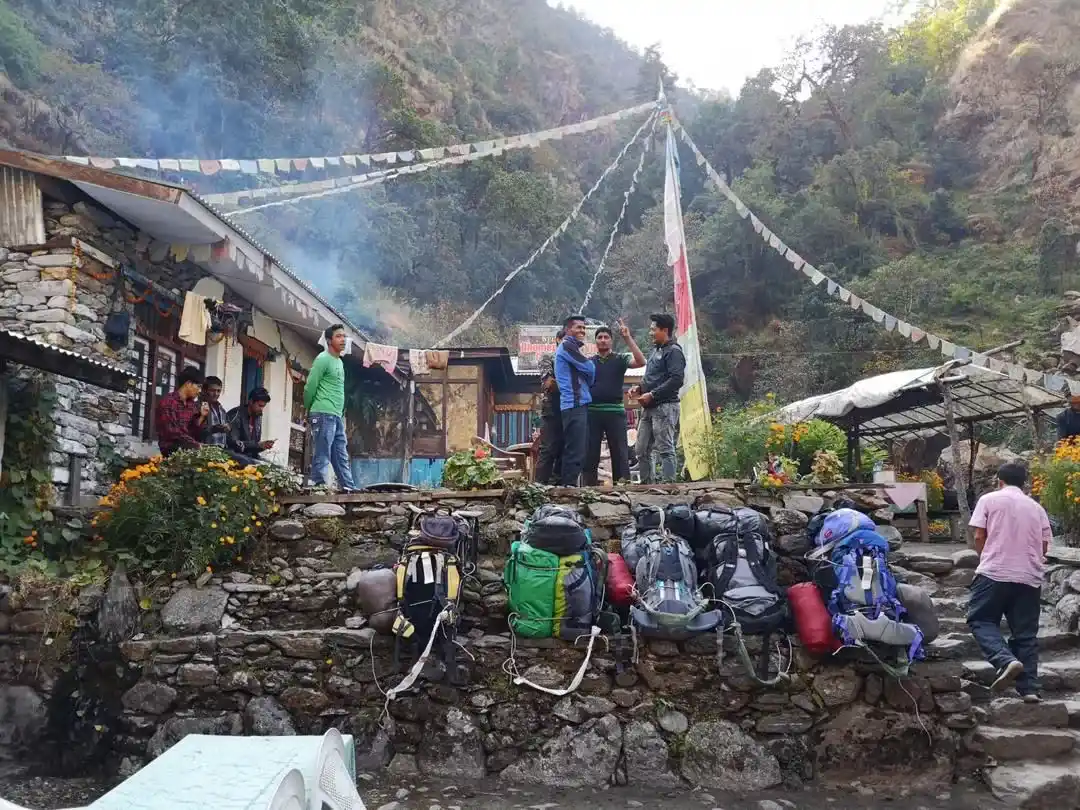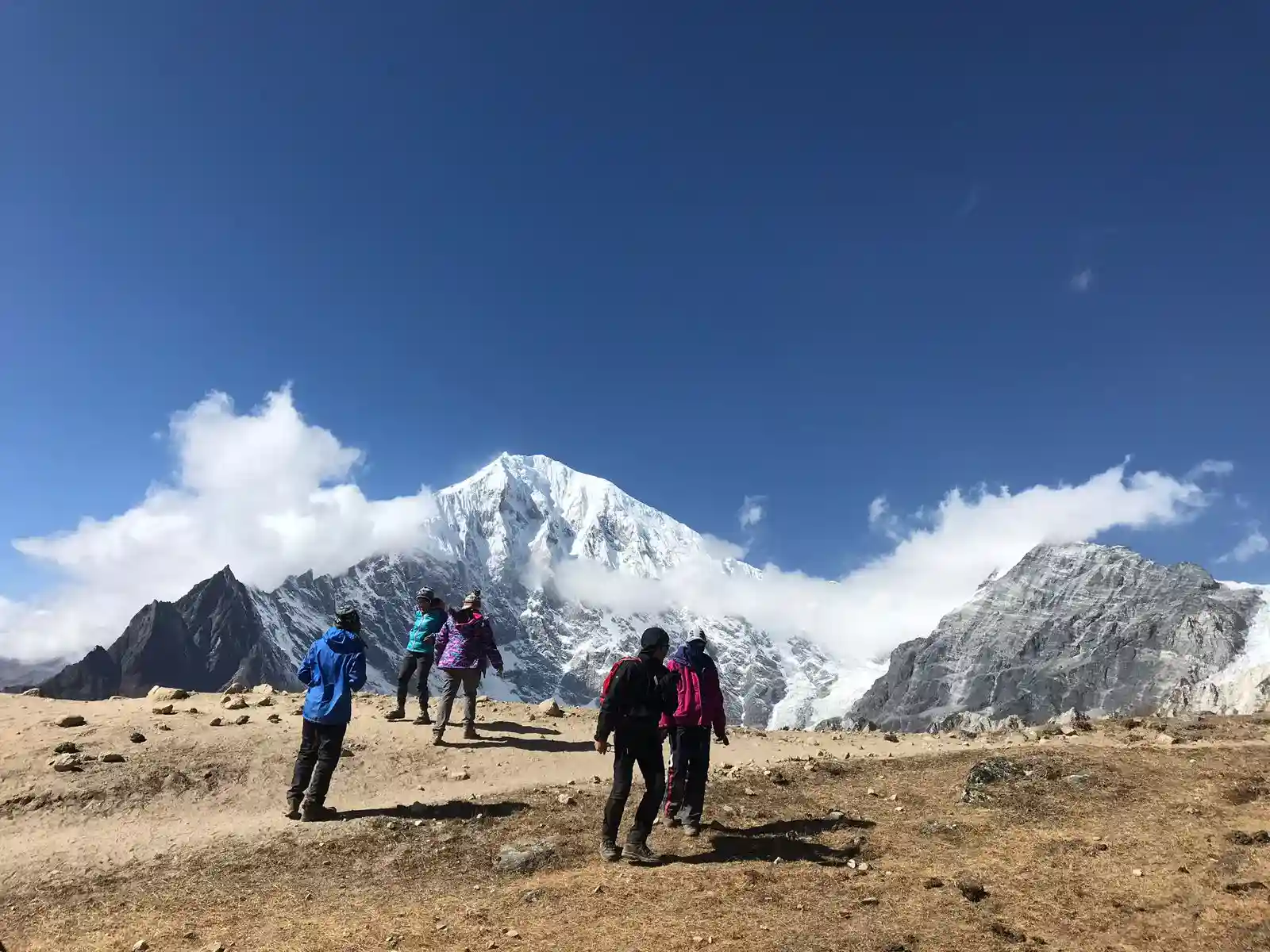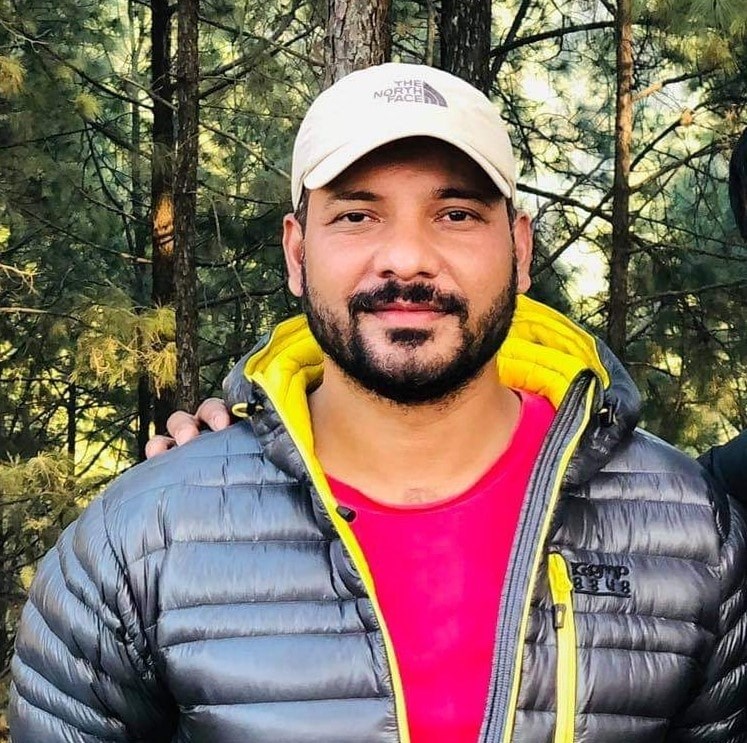The best time for Langtang Valley Trek is regarded as the Spring and Autumn season. Trekking in Langtang Valley is open throughout the year. Different seasons provide you with new and different experiences.
Due to the best weather conditions and other factors, some seasons are called peak season, where the rate of visitors is high. Those seasons are considered the best time for the Langtang Valley trek.
Table of Contents
Langtang Valley, also known as Nepal’s “Valley of Glaciers,” is home to beautiful surroundings, a vibrant local community, and a large variety of plants.
The Langtang trek provides spectacular views of the Himalayas that are covered with snow, unique geography, evergreen forest, and Langtang valley.
The Langtang Valley trek passes through the Langtang National Park, which is the home of different plants and animals and also covers subtropical to mountainous regions.
The National park is the home of the Red Panda, Himalayan bear, Himalayan Tahr, Snow Leopard, and Goral.
The Tamang and Sherpa cultural people of the Langtang Valley, who are inspired by Tibetan Buddhism, provide cultural experiences during your Langtang Valley trek.
Best Time For Langtang Valley Trek Weather
The best time for the Langtang Valley trek is also determined by the weather. The weather is undetermined and changes with the seasons, offering trekkers an amazing experience.
Spring, summer, Autumn, and winter are the four different seasons that the Langtang Valley experiences. Every season has unique beauties and challenges, and the weather greatly impacts the trekking experience.
| S.N | Season | Minimum Weather Temperature | Maximum Weather Temperature |
| 1 | Spring | -10°C | 20°C |
| 2 | Summer | 12°C | 30°C |
| 3 | Autumn | -5°C | 20°C |
| 4 | Winter | -20°C | 10°C |
The above table provides information about the weather condition during the different seasons in the Langtang Valley trek. Each season offers various opportunities and experiences, from the freezing cold of winter to the pleasant warmth of Autumn and spring.
Langtang Valley Trek In Spring: Best Time For Langtang Valley Trek
During the Spring season( from March to May), nature is best as the season is known as the season of colors and joy. While trekking through the Langtang Valley in the spring, you’ll get a chance to see the Rhodendron flowers, which make the whole path beautiful.
During Spring, trekking is regarded to be the best time for Langtang Valley Trek. For ones who love nature and also want to experience trekking, spring.
Due to the clear sky, amazing Himalayas views, peaceful environment, and moderate temperature Spring is the best time of the year for the Langtang Valley trek.
During summer, the days are longer, providing trekkers with lots of trekking time, and the clear sky provides stunning views of the mountains in the Langtang Valley.
Trekking in the Langtang Valley in the spring provides a chance to see the Himalayas at their most beautiful views. Colorful rhododendron forests, amazing mountains, and interaction with the villagers make the trek an unforgettable memory.
Is Autumn The Best Time For Langtang Valley Trek?
Autumn (from September to mid-December) is the best time for Langtang Valley Trek because of the warm and stable weather.
During Autumn, you’ll be able to trek under the clear sky with seeing the amazing views of the Mountains.
The dust has been washed away by the monsoon rains, and the sky is clear, providing unobstructed views of the mountains.

In the morning and night, you’ll feel cold as the temperature ranges -15°C, but during the day, the weather will be pleasant, and the temperature will be around 10°C. In such pleasant temperatures and consistent weather, you will make the best trekking memories.
During Autumn the rainfall chance is very low, which will help you to get views of beautiful villages and the Mountains. There is very less chance of the Mountains being covered with fog.
As you climb up the forest and hillsides, you’ll able to see the different colored roses with colors like red, orange, and yellow. At Autumn, the leaves also change their colors making the surrounding the best.
As Autumn is the peak trekking season when the number of people is large, you’ll get the chance to meet other fellow trekkers on your route and hotels.
You will be accompanied by more people, which is a good thing till your destination. And the bad thing is you’ll have a problem finding accommodation and food.
Trekking through the Langtang Valley in Autumn is an unforgettable experience through a rainbow of colors and natural surroundings.
This season is great for experiencing the Himalayan beauty because of the clear sky, beautiful autumn color, and interactions with local people.
Highlights of Langtang Valley Trek
- Blooming Rhododendron Forests
- Pleasant Weather
- Clear Mountain Views
- Cultural Celebrations
- Langtang National Park
- Langtang Village and the lifestyle of local people
- Amazing view of Langtang Mountain and other mountains
- Buddhist culture and historic Kyanjin Monasteries
- Green forest and beautiful Langtang River
- The viewpoint of Kyanjin Ri and Tserku Ri
Trekking Permits For Langtang Valley Trek
Permits are the most important document before starting a trek in the Langtang region. As permits have to show up at different checkpoints during the trekking routes. it is better if you manage the trekking permits at Kathmandu as it will not make you panic about the trek time.
Here are the trekking permits that you need while trekking in the Langtang Valley:
Trekkers Information Management System (TIMS) Card
Including green, blue, and pink, there are 3 TIMS cards, each indicating something. A green card is for individual trekkers, a blue is for group trekkers, and a pink is for SAARC member people.
In Pokhara and Kathmandu, you can get a TIMS card from the Nepal Tourism Board. You can also get it from the Headquarters of the Trekkers’ Agencies Association of Nepal (TAAN).
After filing the application, the TIMS Card will be provided. To get your TIMS Card, take a copy of your passport and two passport-sized photos.
You do not require a TIMS Card under the following conditions:
- Visitors who received permission from the Department of Immigration are.
- Foreign visitors who have received an invitation from the Nepal government.
- Foreign citizens with a Nepalese residency visa.
- Those in authority who have diplomatic missions or official letters.
- Those on a mission assigned by government departments.
Langtang National Park Entry Permit
You trek through Langtang National Park for any trekking routes in the Langtang region. so a Langtang National Park permit is needed to trek in Langtang Valley trek.
Permits for Langtang National Park can be obtained through the Nepal Tourism Board in Kathmandu. Or you can get them at the Dhunche entry point.
Langtang Valley Trek Accommodation
The Langtang Valley trek provides tea house treks providing various choices for accommodation based on elevation. Lower elevations provide comfortable accommodations with electricity, Wi-Fi, and hot showers.
Basic amenities are provided at higher altitudes, and solar power is available. But Wi-Fi might not always work. Foam mattresses, pillows, and blankets are all included in the twin-sharing rooms.
Food In Langtang Valley Trek
Tea houses in the Langtang Valley Trek provide a variety of food and beverages for trekkers, including vegetarian and non-vegetarian options.
Breakfast is served from 7 to 9 am, with options including bread, eggs, soup, and potatoes. Lunch is served from 12 pm to 4 pm, with rice, lentils, and seasonal vegetables.
Dinner is served from 7:30 pm to 9.00 pm, with the same menu items. All food items are high in carbohydrates to keep trekkers energetic, but as you climb high elevations, you’ll get limited food options.
How To Go To Syabrubesi From Kathmandu
Syabrubesi is the gateway to the Langtang Valley Trek. Before reaching Langtang Valley, Syabrubesi is your previous destination. To reach Syabrubesi, you have to take either a local bus or hire a jeep from Kathmandu Valley.
By local Bus:
Buses to Syabrubesi depart from Gongabu Bus Park in Kathmandu, passing through beautiful views and rural villages.
The journey takes 7 to 8 hours to reach Syabrubesi, depending on road conditions and weather. Local buses are less expensive than other modes of transportation.
It’s advisable to book in advance, especially during peak trekking seasons, to reserve your seat.
By Jeep:
Hiring a jeep from Kathmandu to Syabrubesi offers a comfortable option for small groups and families. However, it is more expensive to hire a jeep than to travel on a local bus.
Private jeeps can be rented through travel agencies and tour operators, allowing for customized routes for view and photography.
Trek From Syabrubesi to Kyangjin Gompa
Kuangjin Gompa is a peaceful village that provides amazing views of the Langtang Himalayas. The journey from Syabrubesi to Kyanjin Gompa takes most trekkers three days.
The trek from Syabrubesi to Lama Hotel is a difficult 15-kilometer journey with 1200m of elevation gain and sunny weather. The trek begins with the river and sunny weather even though the elevation is over 2300m.
The route goes through the forest and is made up of rocky stairs, with the highlight being the river, forests, and bridge crossings. Snow-covered peaks may be visible, but the highlight of the journey is the river, forests, and bridge crossings.
Guide Hire In Langtang Valley Trek
A Langtang Valley trekking guide is necessary for a safe, enjoyable, and memorable trekking experience.
Experienced guides can help you arranges the journey, assure your safety, provide cultural information, the best locations for photographs, viewpoints, and health advice to reduce altitude sickness.
So, if you’re thinking about trekking in Nepal’s Langtang Valley, be sure to hire a knowledgeable guide to make your experience easier.
Why To Trek With My Everest Trip
Choosing the right travel agency for your trek makes all the difference in creating your journey unforgettable. For Travellers and trekkers looking to experience the Himalayas of Nepal, My Everest Trip takes pleasure in being the ideal adventure partner for your journey.
My Everest Trip is the travel and trekking agency of Nepal located in Kathmandu, operating in different regions for over a decade with 100 + travelers and trekkers from worldwide.
Here is the reason why My Everest Trip is best for your Best experience during trekking:
- Expert Guide: MyEverestTrip has licensed guides with 30+ years of experience. They’re knowledgeable about local culture and speak English fluently. We can also provide guides who speak Chinese and European languages upon request.
- Customized Itinerary: we customized your Itinerary according to your desire knowing how long you are staying and your budget.
- Reasonable cost: We offer affordable trek packages with no hidden costs. You can Compare prices with other agencies and can proceed if you are satisfied.
- The priority is your safety: Your safety is our priority. Our guide and porter have their insurance. And we recommend insurance to our trekkers. In any emergencies, we will always be there for your safety.
- Responsible and Eco-Friendly: Responsible trekking is our first priority. We are honest about our services and prices. All members of the team are over 18, and we discourage child labor. We dispose of waste responsibly and never engage in negative activities that could harm locals.
FAQs
How long does it take to walk Langtang Valley?
The Langtang trek is 77 km/48 mi, which takes 5-7 days on average to complete the route.
Can you trek Langtang without a guide?
You can either do your trek alone or hire a local trekking guide. But trekking in Langtang Valley without a guide can be difficult.
What is the highest peak of the Langtang trek?
Kyanjin Ri, which stands at an altitude of 4773m / 15655 ft, is the highest point for trekkers to reach on the highest peak of Langtang Trek.
What is the best time to go for the Langtang Valley trek?
Even though the trek can be done throughout the year, Spring and Autumn are considered the best season for trekking in Langtang Valley.
Final Word
The best time for the Langtang Valley treks is in spring and Autumn, with rhododendron blooms and greenery surrounding.
These seasons provide stable weather, clear skies, and comfortable temperatures, making ideal time for trekking the Langtang Valley.
The best time to visit depends on personal preferences and desired trekking experience. However, Spring and Autumn are highly recommended as both of these seasons provide the best trekking conditions.
Because of the peak season, it is obvious that there will be a high crowd this season as everyone waited for this season to trek in Langtang valValley
If you don’t like crowds and want a peaceful environment, you can trek during the off-season of winter (December-February) or monsoon / rainy (June-August).
But these seasons are not considered good seasons as this season has different challenges, such as colder temperatures, snow, and rain, which require extra preparation and caution.





